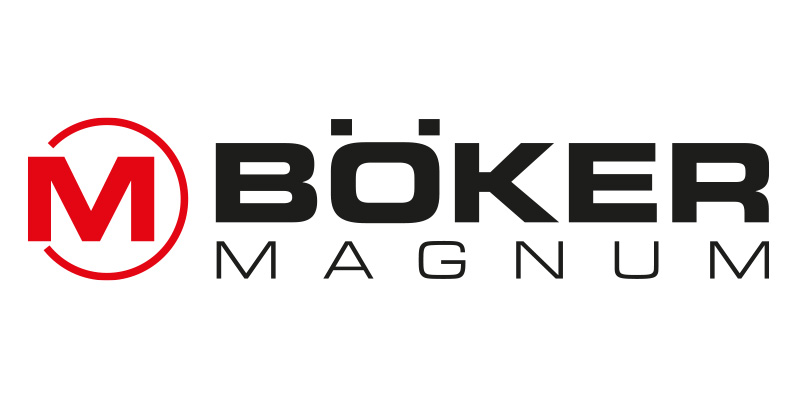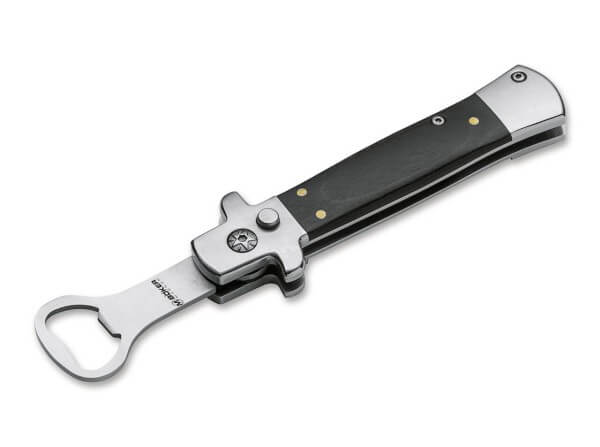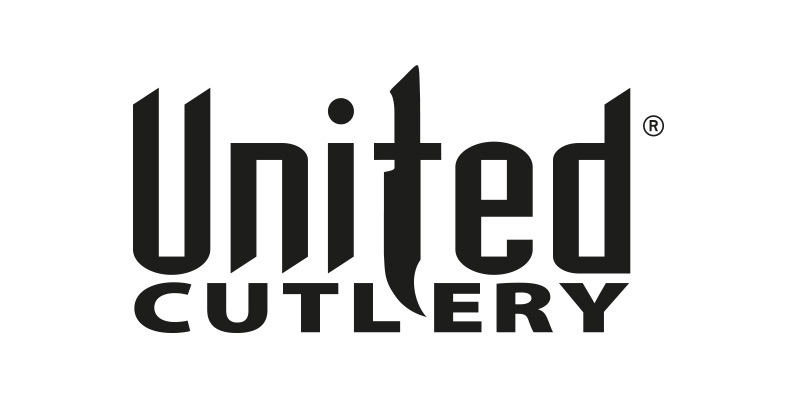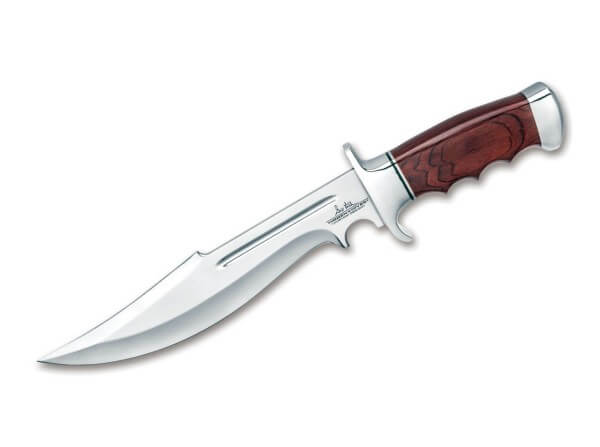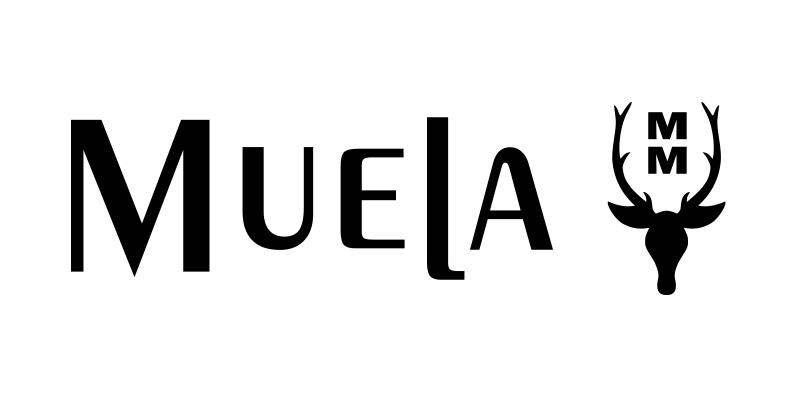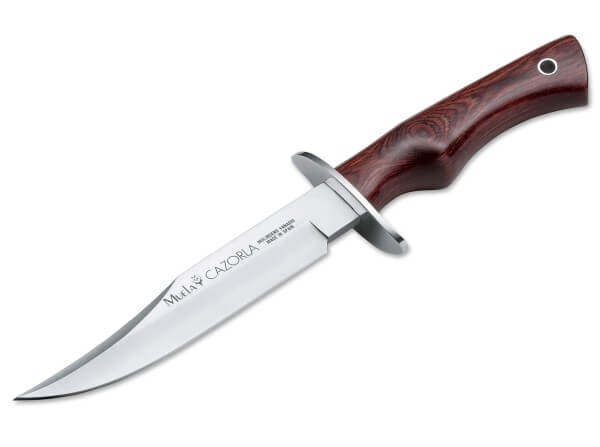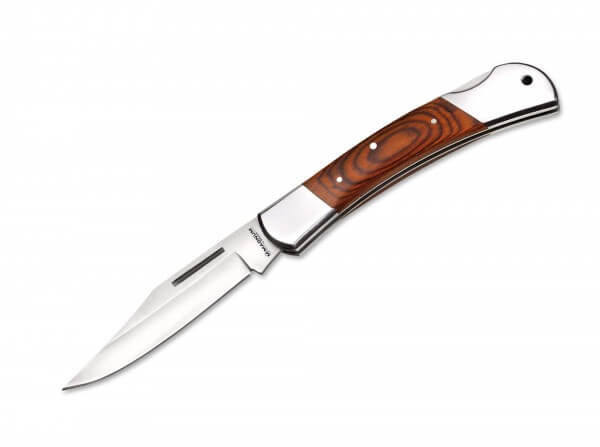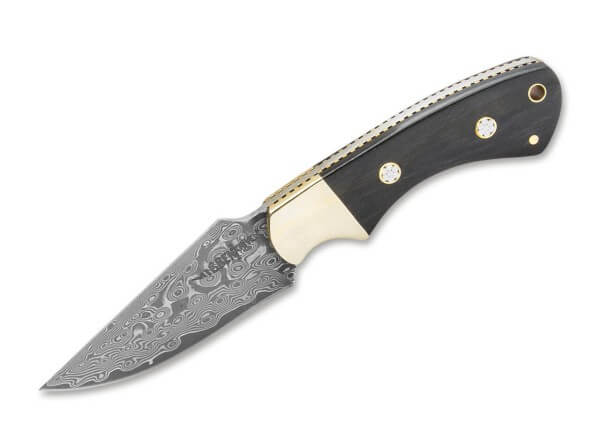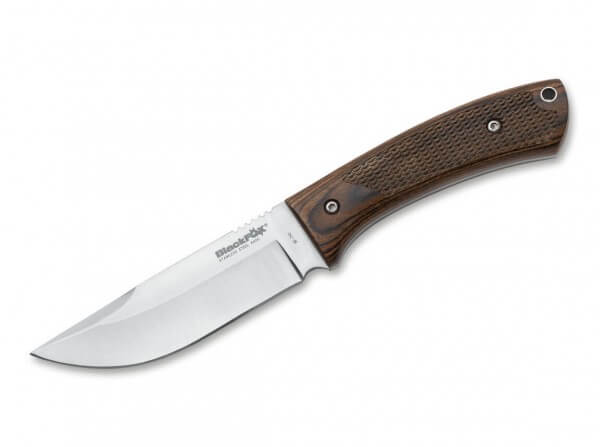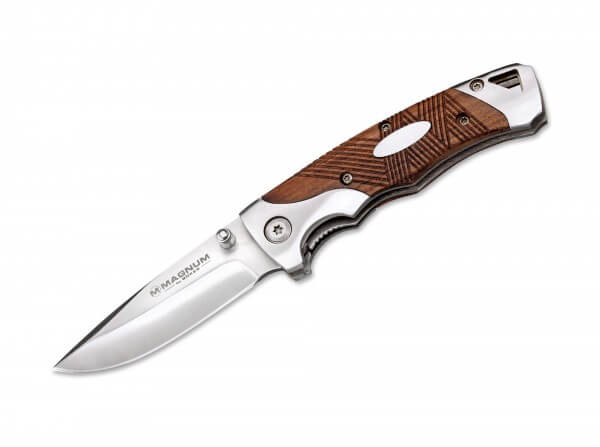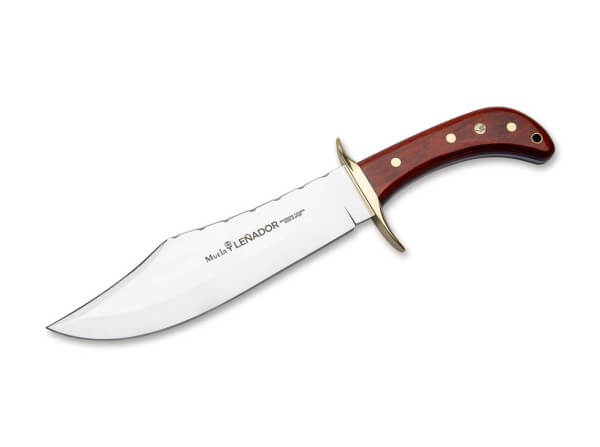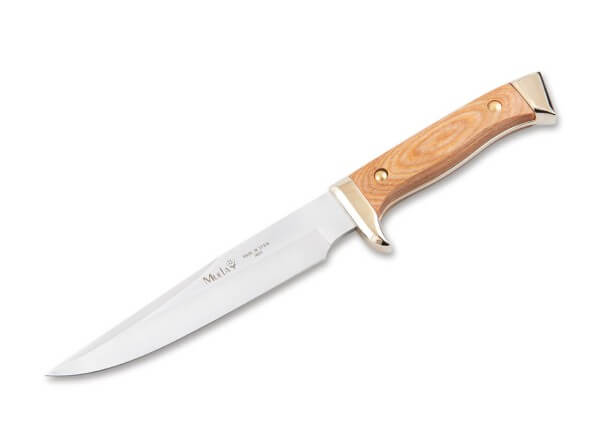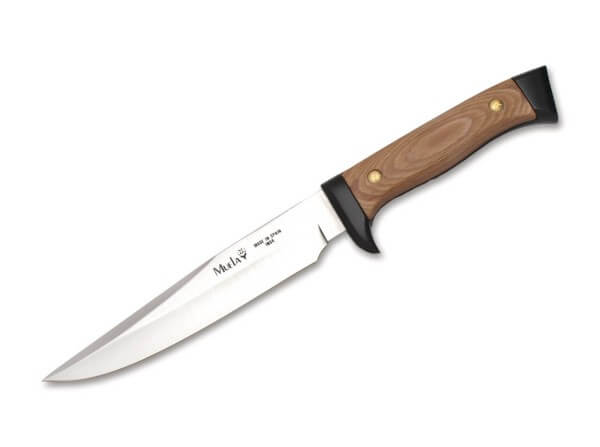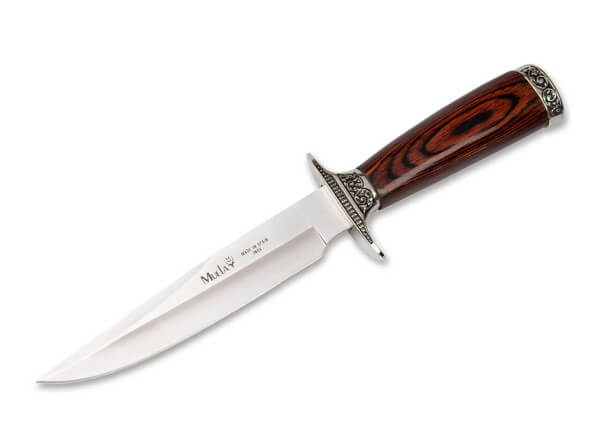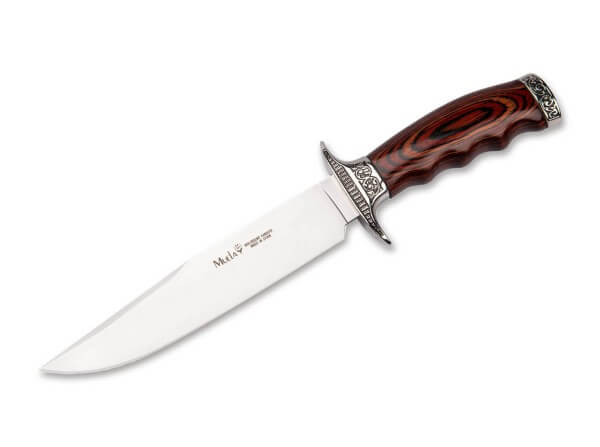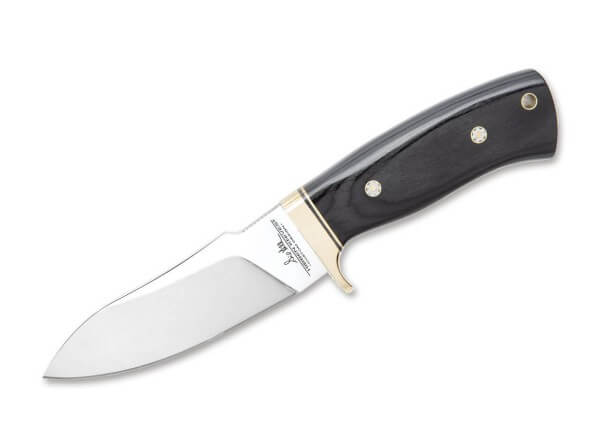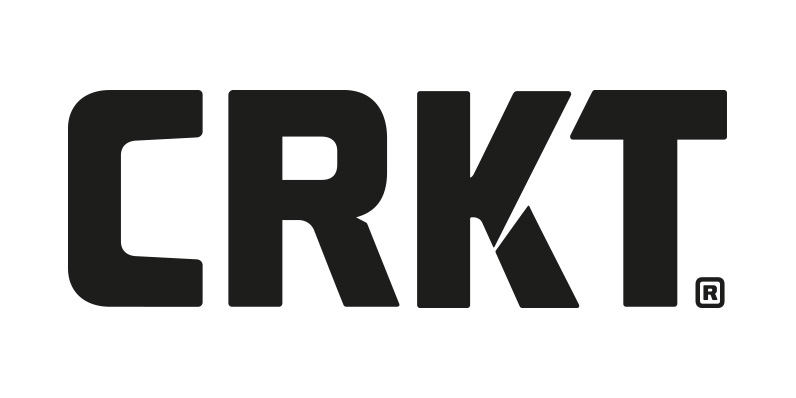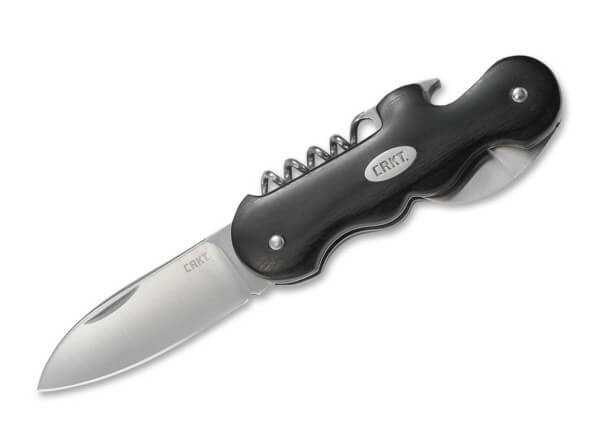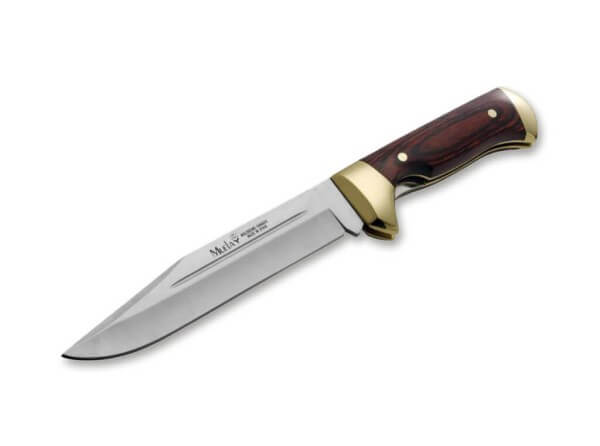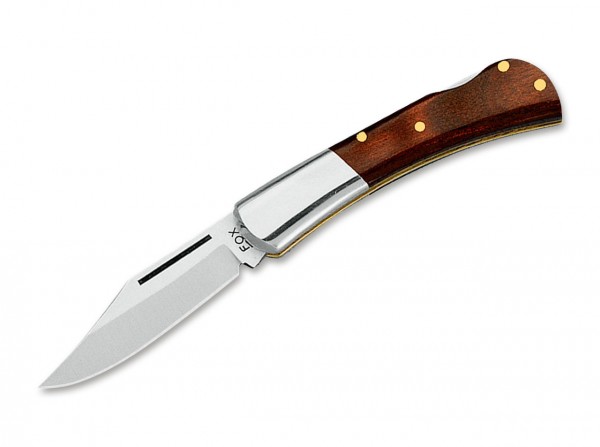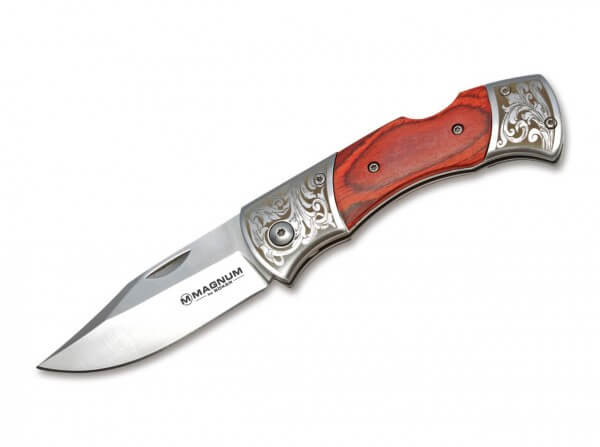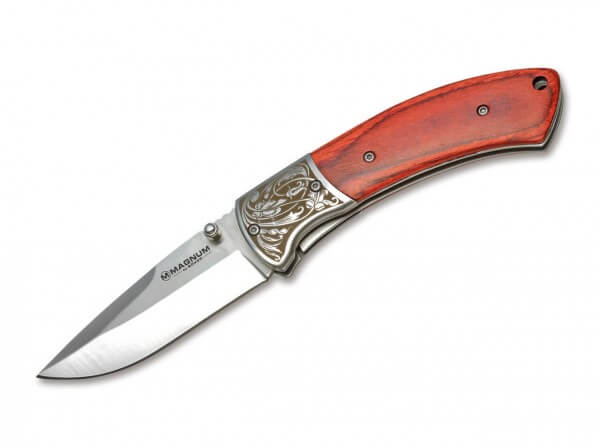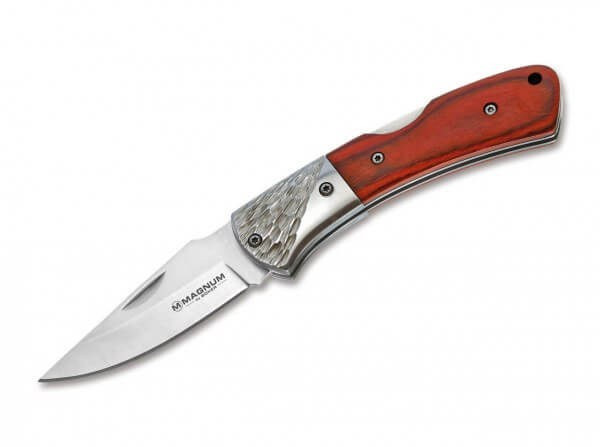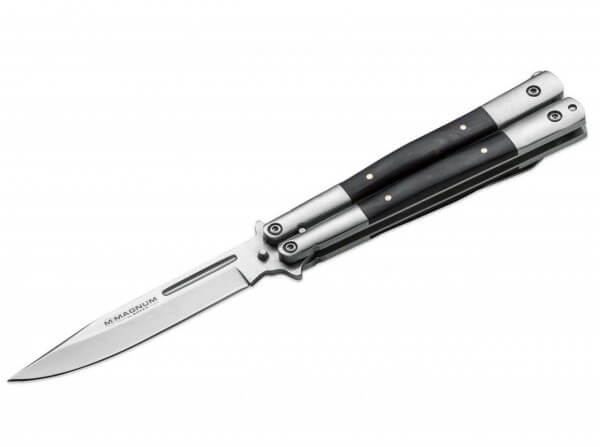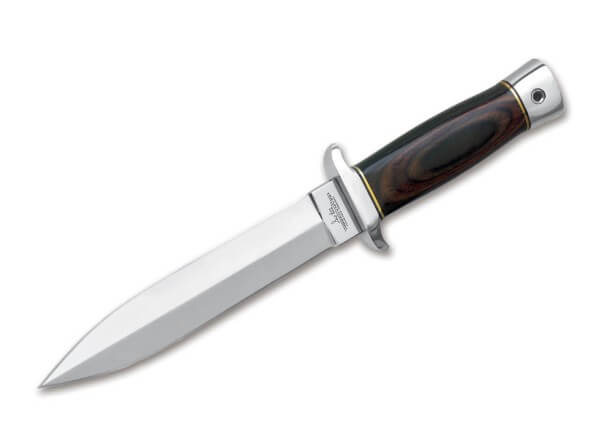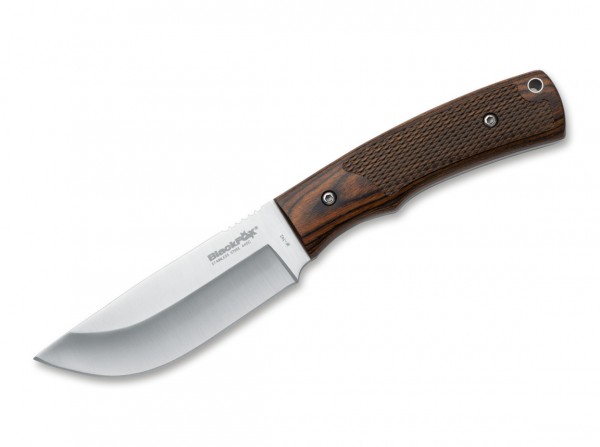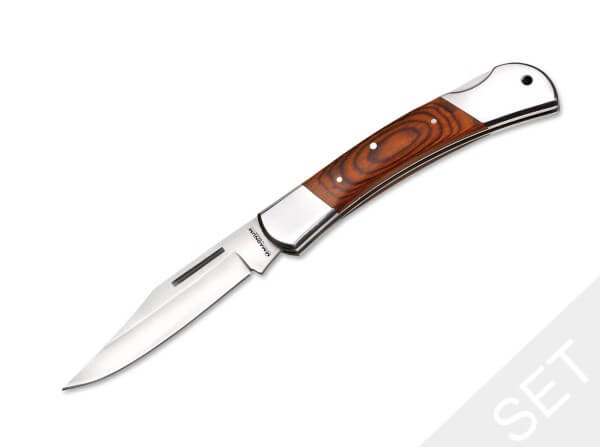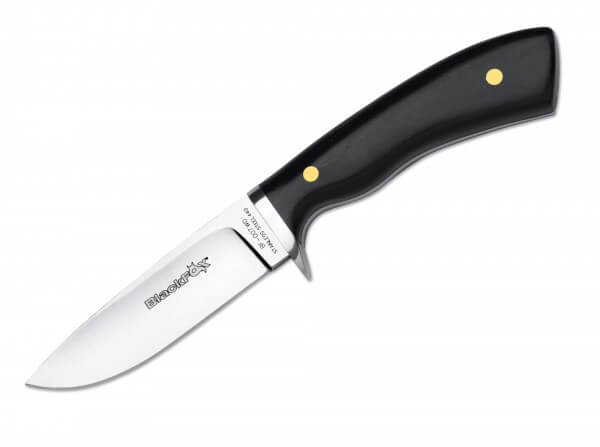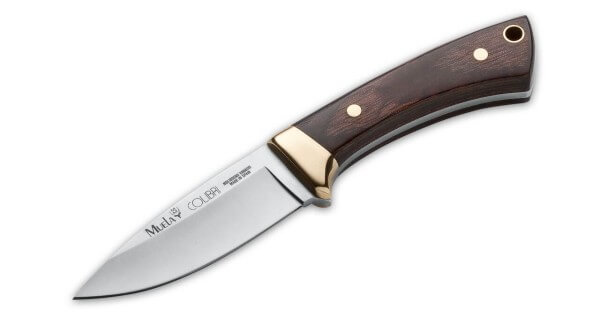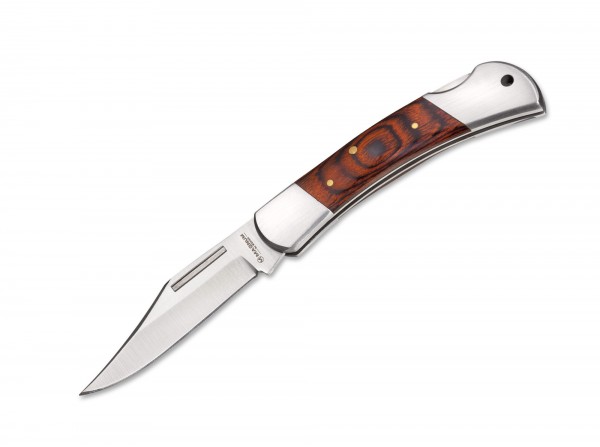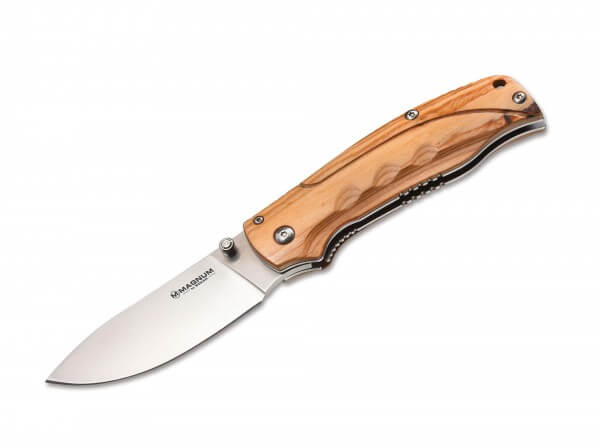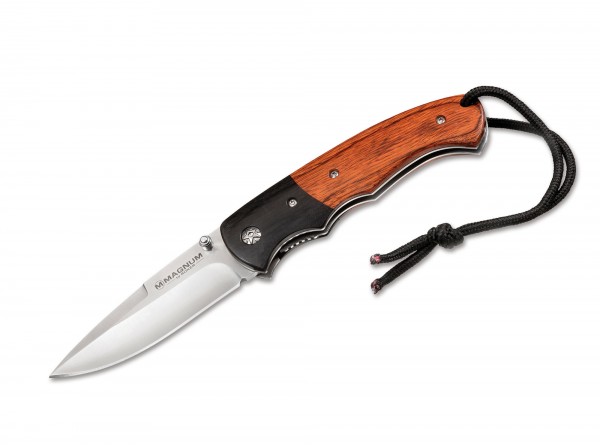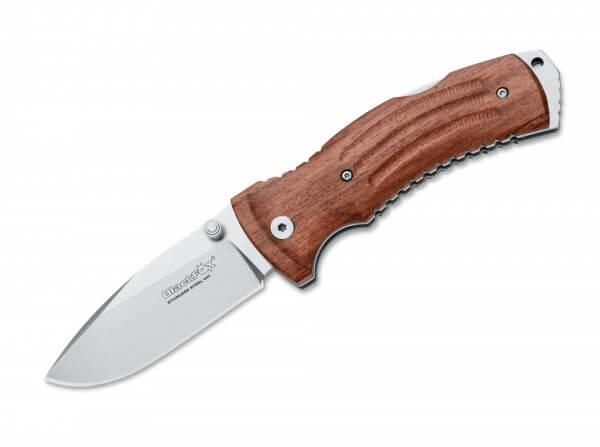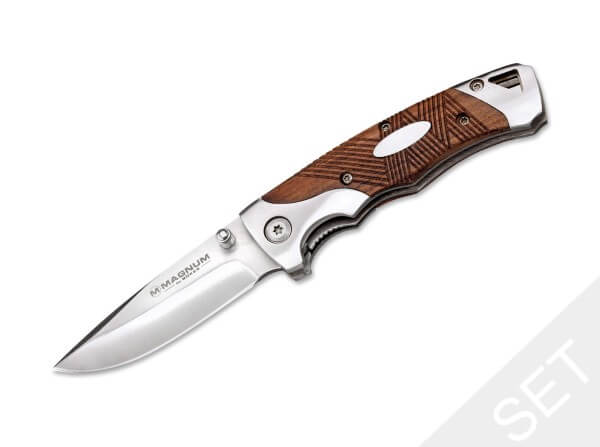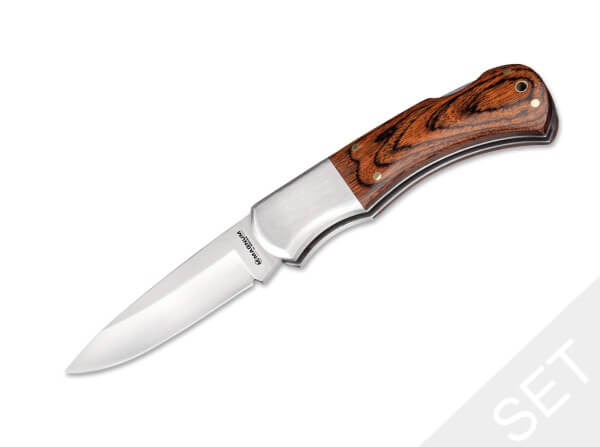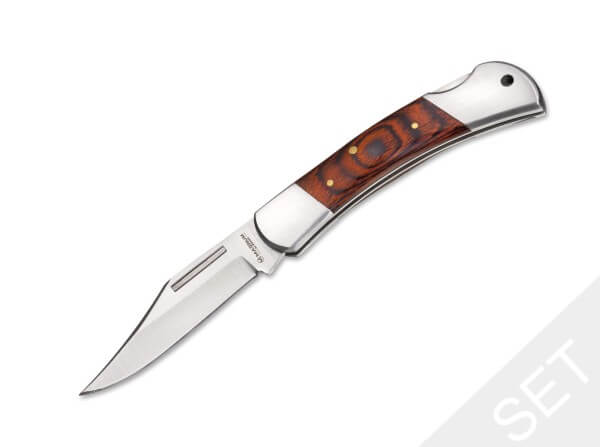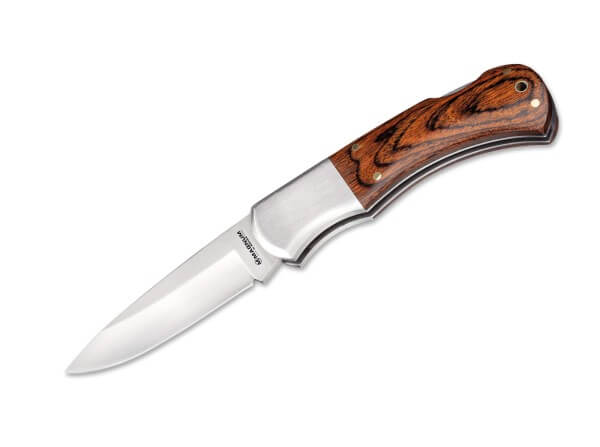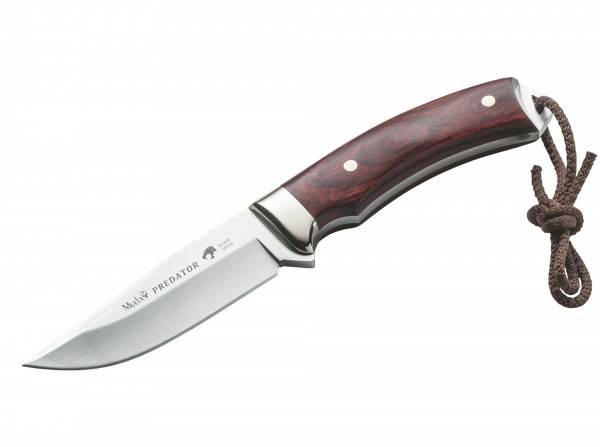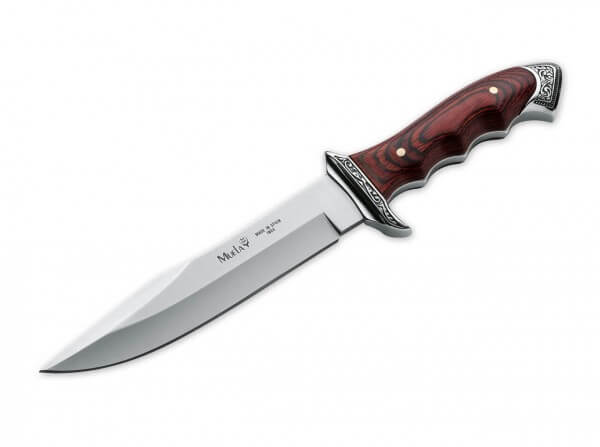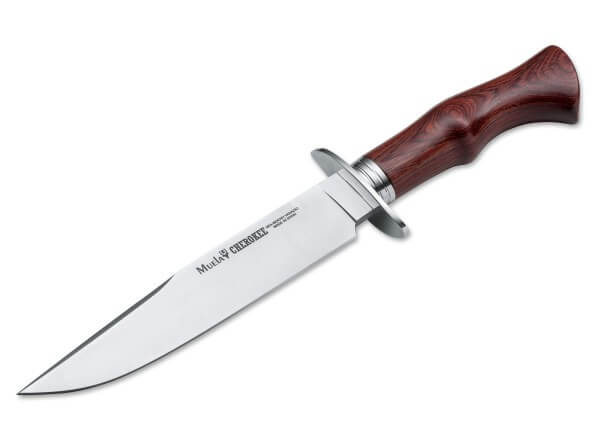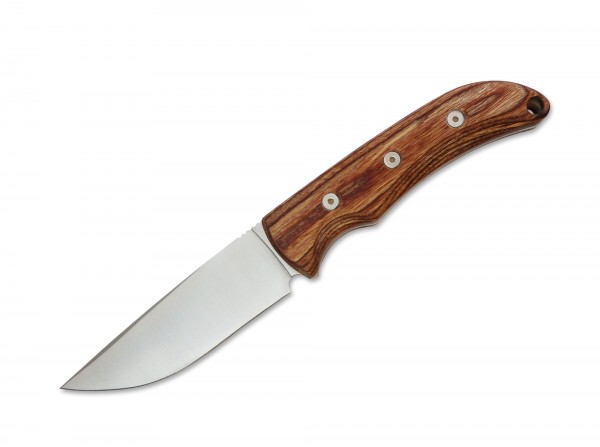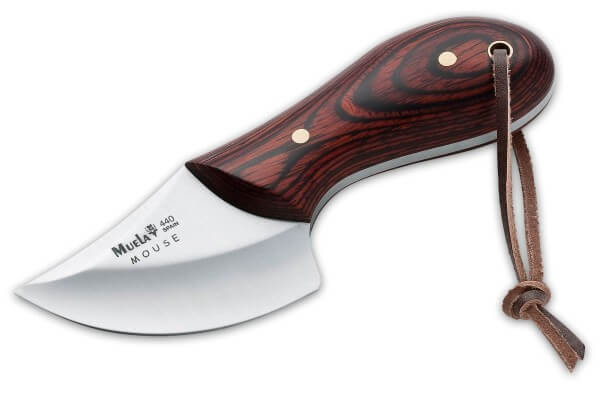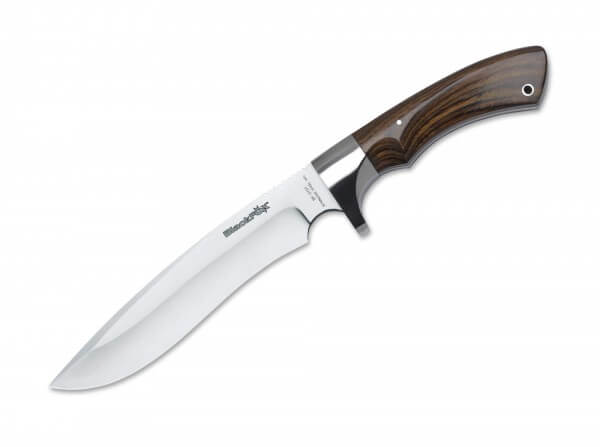Pakkawood
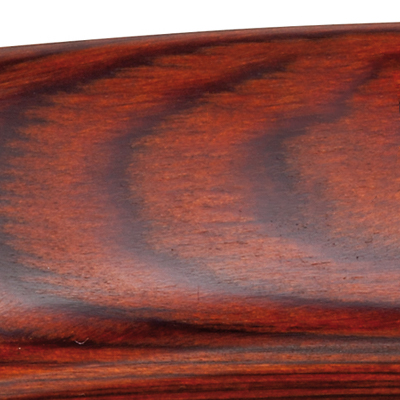
Pakkawood is the name of impregnated wood veneers used in knife production to make handle scales.
Veneer is a wood product consisting of an inexpensive wooden core covered with thin layers off a high quality wood that make it more precious. The layers used as a finish are between 0.3 and 6 mm thick. They are cut from the lumber by peeling (peeled veneer), sawing (sawed veneer) or slicing (sliced veneer). The term veneer comes from the French verb "fournier" meaning "to furnish" and was first used in English as "fineer". The method itself originated in the 14th century BCE. It was developed in Egypt, a country with a dry climate, where trees were scarce and fine hardwood and lumber were not available in sufficient quantities. Unlike conventional veneer, Pakkawood is an umbrella term for wood veneers consisting of several layers of high-quality hardwood. The layers are pressed, impregnated, sanded and polished. In a very high-pressure environment and with the application of heat, a new wood product is created that has a striking pattern and coloring, which may vary depending on the composition of the veneer layers.
Pakkawood is impregnated with an epoxy resin which makes it highly water- and weatherproof. At the end of the production process, Pakkawood is ground and polished to achieve a silky sheen. Pakkawood is a very strong and durable material that keeps its shape and remains colorfast. Since the finished product consists of natural wood but is considered a synthetic product in its composition, there is no generalized information about its color and pattern, since these aspects always depend on the components used to create Pakkawood and the elements of the production process.
Thanks to its special properties, Pakkawood is a popular material for handle scales, highly adaptable to any design requirements. Handles made from this material are available in many colors and shapes.

